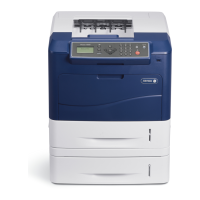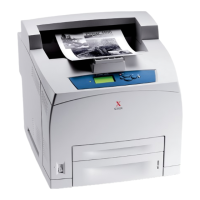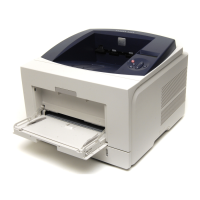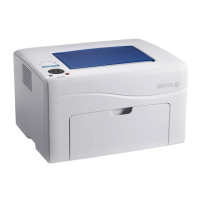Security
Phaser 4622
System Administrator Guide
85
IP Filtering
Overview
IP Filtering is a security feature that allows you to control access to Internet Services. IP Filtering allows
you to prevent unauthorized access by TCP/IP (Transmission Control Protocol/Internet Protocol).
The IP Filtering feature provides security to the machine, by allowing you to register the IP addresses
permitted to communicate with the machine.
Enable IP Filtering
1. At your Workstation, open the web browser, enter the TCP/IP Address of the machine into the
Address bar.
2. Press Enter.
3. Click on the Properties tab.
4. Click on the Security link.
5. Select IP Filtering in the directory tree.
For IPv4 Filtering
6. Checkmark the IPv4 Filtering Enabled box.
7. Enter the permittable IP Address(es) access to the device in the following IP Address table.
Note Enter in the IP address or a IP address range by using an asterisk (*) as a wild-card character,
for example:
• 192.246.238.* is used to reference a subnet of host address.
• 192.246.* is used to reference a wider subnet of host address.
• 192.* is used to reference the widest subnet of host address
8. Click on the Apply button to accept changes.
9. If prompted, enter the Administrator’s User ID admin and Password 1111, and click on Login.
10. Click on OK.
For IPv6 Filtering
11. Checkmark the IPv6 Filtering Enabled box.
12. Enter the permittable IP Address(es) access to the device in the following IP Address table.
Note Enter the IPv6 address in form of CIDR convention. Prefix indicates the number of leftmost
bits to be referenced.
Note For example:
• 2001:DB8:1234:215:215:99FF:FE04:D345 / 128 is used to reference a complete address.
• 2001:DB8:1234:215:215:99FF:FE04:D345 / 64 is used to reference prefix address
consisted of leftmost 64 bits only.
• 2001:DB8:1234:215:215:99FF:: / 80 is used to reference prefix address consisted of
leftmost 80 bits only.
